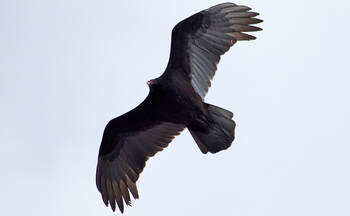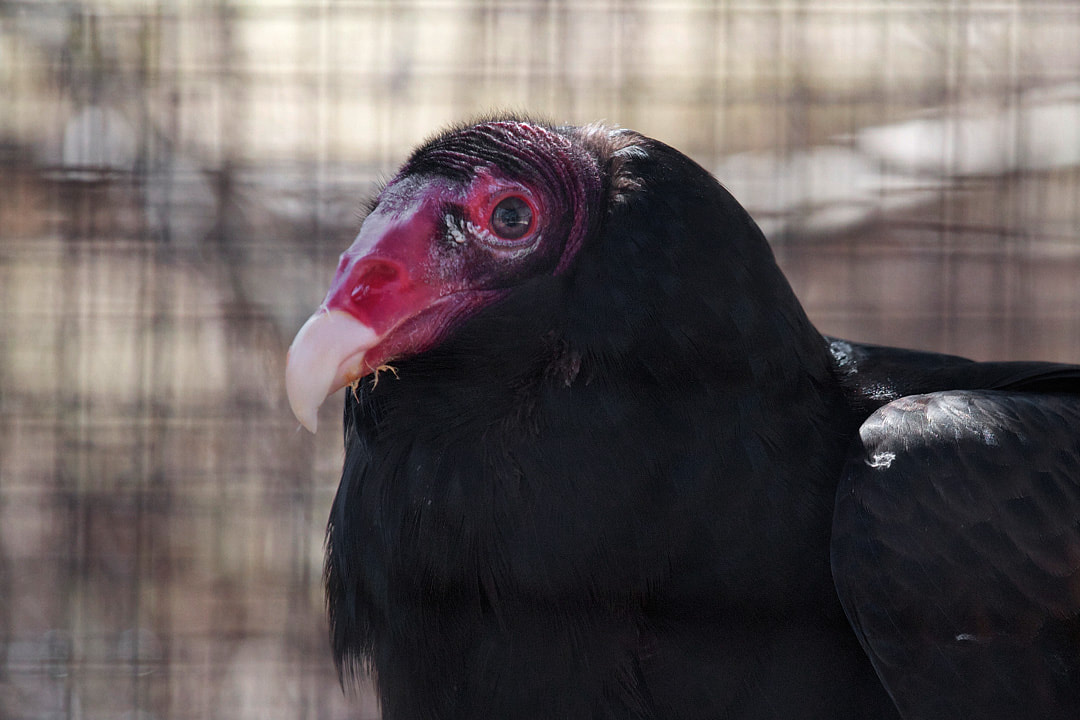Turkey Vulture (Cathartes aura)
|
Common Name: Turkey Vulture
Scientific Name: Cathartes aura Physical Description: The Turkey Vulture is a large dark brown vulture with a naked red head up to 31 inches in length with a wingspan up to 70 inches. They soar in wide circles, searching for food below them. Habitat: They can be found in nearly any habitat within their range, including mountains, forests, plains, swamps, and coastal regions. They easily adapt as well to human development and can be found in urbanized areas. Range: Turkey Vultures live in southern Canada and the lower 48 states of the United States of America. Diet: They eat Carrion including road kill and washed-up fish, rotten fruit and vegetables, plant matter, insects, other invertebrates, reptiles, bird nestlings…even animal dung. Lifespan: They live up to 16 years in the wild and 33 in human care. Social Structure: Turkey Vultures breed once a year between March and June and lay up to 3 eggs after a 30-40 day incubation period. The chicks gain their flight feathers within 80 days and are independent by 90 days. Status: Least Concern1 Other: True or false? Engineers have been known to use a bird’s sense of smell to detect leaks in natural gas pipelines. True: Engineers will use Turkey vultures (Cathartes Aura) to detect leaks in natural gas lines with their amazing sense of smell. They pump a gas called ethyl mercaptan into pipelines. This is the gas produced by decaying carrion. Turkey Vultures home in on the scent escaping from leaks. 1 https://www.iucnredlist.org/species/22697627/131941613 |








